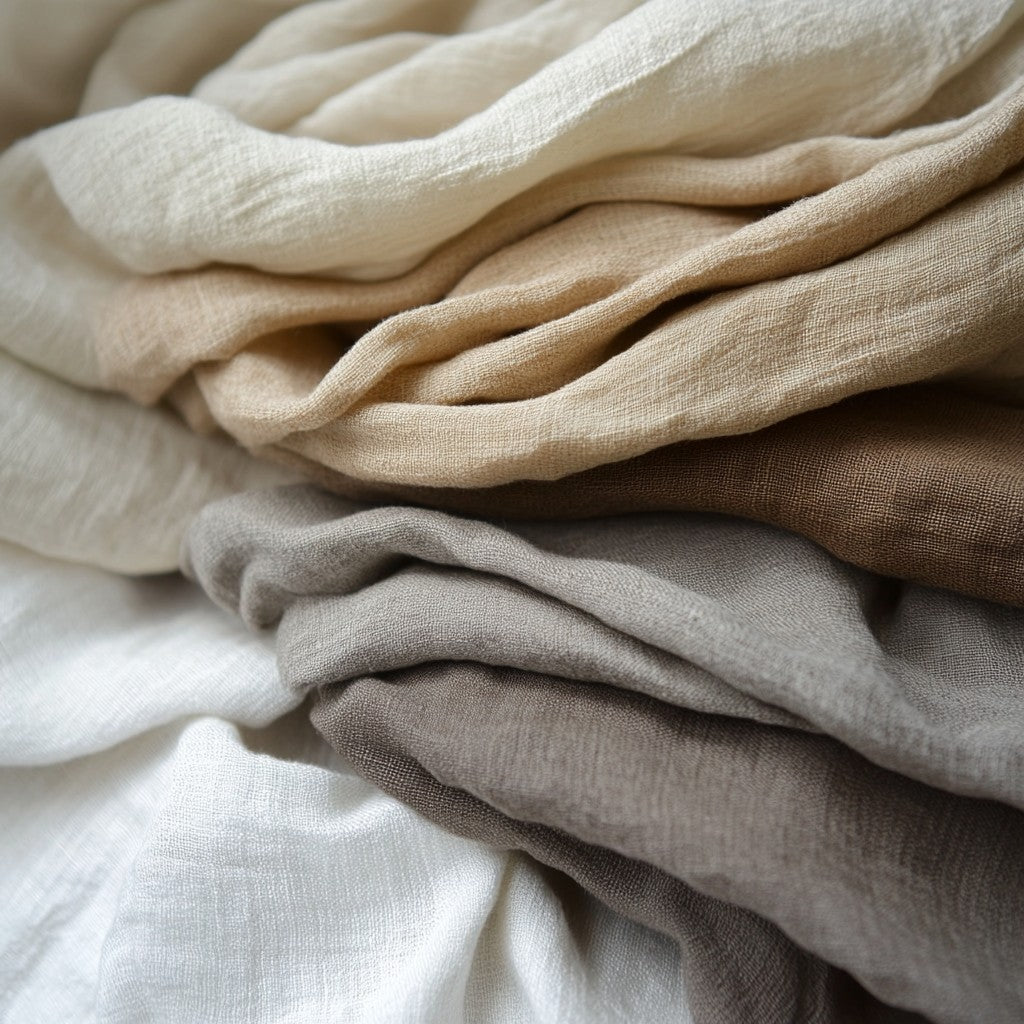
Breaking Down the Myths About Hemp Fabric
Share
Hemp Fabric: Myths, Realities, and the Future of Sustainable Textiles
In recent years, hemp fabric has made a remarkable resurgence in the fashion and textile industries. Long associated with rope, canvas, and counter-cultural style, hemp is now being rediscovered as a modern, sustainable material with wide-ranging applications. Marketed as both eco-friendly and durable, hemp is gaining traction with environmentally conscious consumers, designers, and brands seeking alternatives to fast fashion and synthetic fibers.
Yet despite its growing popularity, hemp fabric is still widely misunderstood. Many consumers are unsure of how hemp is grown, processed, and worn, with lingering myths rooted in outdated ideas or confusion with its psychoactive cousin, marijuana. These misconceptions can keep people from embracing one of the most promising natural fibers available today.
Let’s clear the air and debunk some of the most common myths about hemp fabric—because the truth might just surprise you.
Myth #1: Hemp Fabric Is Scratchy and Uncomfortable
Reality: This may have been true decades ago, but modern hemp fabrics tell a very different story.
In the past, hemp textiles were often coarse and stiff, largely due to primitive processing methods. However, advances in textile technology have dramatically improved the softness and quality of hemp fibers. Today, hemp fabric can be soft, breathable, and gentle on the skin, with a feel similar to cotton, linen, or even bamboo.
In fact, hemp gets softer over time with each wash, making it an excellent choice for everyday wear, bedding, and baby clothes. High-quality hemp garments are no longer relegated to the rough-and-ready aesthetic—they’re just as comfortable as they are sustainable.
Myth #2: Hemp Is the Same as Marijuana
Reality: Hemp and marijuana come from the same plant species, Cannabis sativa, but they are entirely different in terms of usage and chemical composition.
Industrial hemp, the kind used in fabric production, contains less than 0.3% THC, the psychoactive compound found in marijuana. This minuscule amount is not enough to cause any kind of intoxication. In other words, you can't get high from wearing a hemp T-shirt or sleeping on hemp sheets.
Governments around the world legally distinguish industrial hemp from marijuana for this reason, and it is cultivated under strict regulations to ensure its non-psychoactive nature.
Myth #3: Hemp Fabric Isn’t Stylish
Reality: Hemp has come a long way from its rustic roots.
Once seen as the fabric of choice for hippies and eco-warriors, hemp is now being embraced by mainstream fashion and luxury designers alike. Brands are incorporating hemp into everything from casual basics and activewear to tailored pieces and runway-ready collections.
Hemp blends beautifully with other fibers, including organic cotton, silk, wool, and even recycled synthetics, allowing designers to experiment with texture, drape, and finish. Its natural color takes dyes well, producing rich, vibrant hues. This makes hemp a versatile and fashionable choice for consumers who care about both aesthetics and ethics.
Myth #4: Hemp Uses a Lot of Water to Grow
Reality: Hemp is one of the most water-efficient crops in commercial agriculture.
Compared to cotton, which is notoriously water-intensive, hemp uses up to 50% less water to grow and doesn’t require chemical-laden irrigation systems. Hemp thrives in a variety of climates and soils with minimal input, and its deep root system helps retain soil moisture and prevent erosion.
Even better, hemp is often grown without synthetic pesticides, herbicides, or fertilizers, which reduces water pollution and supports biodiversity. This makes hemp a strong contender for sustainable farming practices, especially in regions grappling with water scarcity.
Myth #5: Hemp Fabric Isn’t Durable
Reality: Hemp is one of the strongest plant fibers in the natural world.
Historically used for sails, ropes, and workwear, hemp’s reputation for durability is well earned. When woven into fabric, hemp produces a tightly bound textile that holds its shape, resists wear and tear, and stands up to frequent washing.
In fact, hemp fibers are up to three times stronger than cotton, making them ideal for applications like jeans, bags, home furnishings, and outerwear. Clothes made from hemp are not only long-lasting but also maintain their quality over time—contributing to a longer product lifecycle and less textile waste.
Myth #6: Hemp Production Isn’t Really Eco-Friendly
Reality: Few fabrics can match hemp’s environmental benefits.
Hemp grows quickly—often ready for harvest in just 90 to 120 days—and can be cultivated multiple times per year. It absorbs more CO₂ per acre than most forests, helping to offset greenhouse gas emissions. Its extensive root system improves soil health and removes toxins, making it a regenerative crop that gives more than it takes.
Additionally, hemp fabric is 100% biodegradable, unlike synthetic materials that shed microplastics and linger in landfills for centuries. When manufactured using low-impact processes and non-toxic dyes, hemp textiles have a small ecological footprint from seed to shelf.
Of course, not all hemp fabric is created equal. As with any material, the sustainability of hemp depends on the production practices behind it. But when responsibly sourced and processed, hemp remains one of the most sustainable textile options available today.
Final Thoughts
As awareness around sustainability grows, so does the demand for materials that are both eco-conscious and high-performing. Hemp fabric offers a unique combination of durability, style, comfort, and environmental stewardship—qualities that are increasingly essential in our climate-aware world.
By dispelling outdated myths, we not only elevate hemp's reputation but also empower consumers to make informed, planet-friendly choices. Hemp isn’t just a relic of the past—it’s a forward-looking fabric with the potential to transform the fashion and textile industries.
Whether you're an ethical shopper, a designer, or simply curious, hemp deserves a place in your wardrobe—and in the future of sustainable living.
